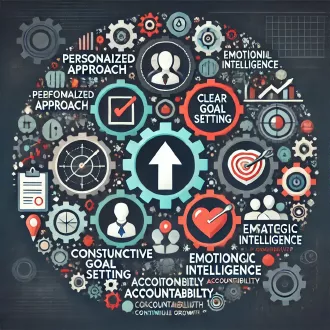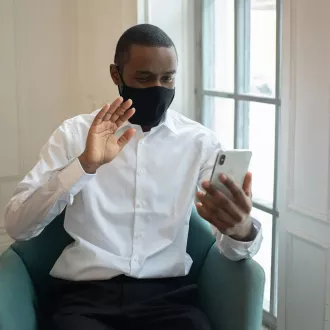Transcription Active listening. Types of questions
Effective communication is a pillar in coaching, and human relations in general. But in this discipline it takes on special relevance. It is not just about what is said, but how you listen and ask questions.
Active listening involves being present in the conversation and understanding not only the words, but also the emotions and underlying intentions of the speaker.
It requires genuine engagement on the part of the listener; it involves asking appropriate questions. The importance of questions lies in their ability to direct the conversation and move it in a specific direction.
Powerful questions are those that encourage action and are designed to lead toward a goal. Powerful questions focus on performance and behavior, leading the coachee to consider concrete actions.
Distinguishing between open-ended and closed-ended questions is essential:
- Open-ended questions: these questions invite a detailed and descriptive response. They begin with words such as "what?", "how?" or "why?" and encourage the expansion of ideas and thoughts.
- Closed-ended questions: These questions usually have short answers, such as yes or no. They are usefulfor eliciting specific information or confirming specific information. They are useful for eliciting specific information or confirming facts.
Powerful questions can be asked in open-ended or closed-ended form but have a greater impact if they are open-ended. A powerful question leads to reflection and internal analysis, and for that the coachee needs space to express him/herself. It is obvious that with closed questions (basically yes or no) answers limit the options and can take much longer to get to the bottom of a situation.
When asking open-ended questions, it is important to consider how the client is feeling, as emotions play a crucial role in decision making and action. Open-ended questions can reveal the real issues behind superficial presentations and trigger meaningful conversations.
They don't have to be complicated, it can be as simple as: What do you enjoy most about this project, or How will you feel when you achieve this goal, or Tell me about your performance this week.
Someone may present a problem that is not the real issue at hand, and this is where open-ended questions come into play to unravel the root cause. Asking a series of open-ended questions can lead the coachee to explore their perspective more deeply and find more effective solutions.
These open-ended questions invite the client to share deeper and more detailed thoughts, which helps to gain a full understanding of their perspective and situation. Powerful questions, on the other hand, have the ability to catalyze change and growth. By guiding the conversation toward specific areas for improvement, these questions elicit action and encourage personal and professional development.
The way you pose questions can influence the depth and quality of the answers you receive. Using different types of questions in the coaching process can help explore ideas, challenge assumptions and encourage reflection.
These, as we have seen, can be open-ended or closed-ended and can be used to address many of the topics covered in this course:
- Clarifying questions: these are used to clarify details or better understand what the coachee has said. They help to avoid misunderstandings and confusion.
- Reflection questions: invite the coachee to reflect on his or her experiences, thoughts and emotions. They encourage self-awareness and deep exploration.
- Exploratory questions: are used to further investigate a particular issue or problem. They help to delve deeper into the underlying layers and consider different options and approaches. They encourage creativity and informed decision making.
- Challenge questions: challenge assumptions and beliefs. They can help the coachee to see a situation without bias and from diff
types questions




